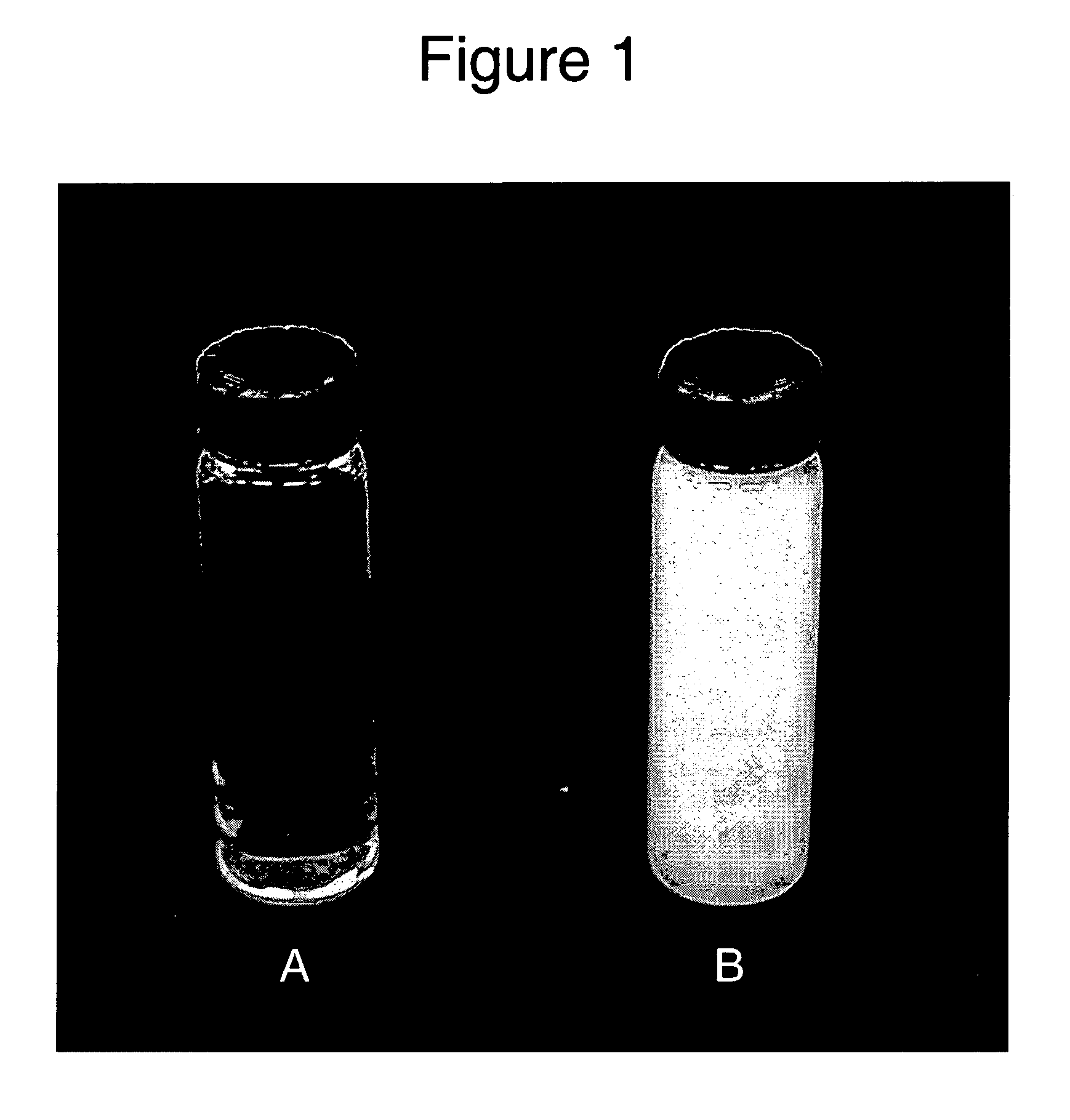Acrylic pressure sensitive adhesives
a technology of pressure sensitive adhesives and acrylics, applied in the direction of film/foil adhesives, adhesive types, bandages, etc., can solve the problems of low utilization rate of drugs, low kinetics of this process, and inability to meet the requirements of a single application, so as to avoid supersaturation
- Summary
- Abstract
- Description
- Claims
- Application Information
AI Technical Summary
Benefits of technology
Problems solved by technology
Method used
Image
Examples
example 1
[0046] An initial charge containing 32.1 g 2-ethylhexylacrylate, 13.7 g methylacrylate, 3.6 g acrylic acid, 82.5 g cyclohexane, and 0.17 g 2,2′-azobisisobutyronitrile (AIBN) polymerization initiator was prepared and charged to a two liter 4-neck round bottomed flask equipped with stainless steel stirrer, thermometer, condenser, water bath, and slow addition funnels. The initial charge was heated to reflux temperature while stirring. At 10 minutes following the beginning of reflux, a monomer mixture containing 182.5 g 2-ethylhexylacrylate, 77.1 g methylacrylate and 21.0 g acrylic acid and 181.50 g cyclohexane was added uniformly over a period of 2 hours. Also beginning at 10 minutes from the start of reflux, a mixture of 168.3 g cyclohexane and 0.79 g AIBN predissolved in 6.6 g ethyl acetate was added uniformly over a period of 3 hours. Reflux was maintained for a further 2 hours. A solution of 2.5 g of a short half-life polymerization initiator in 72.6 g cyclohexane was then added u...
example 2
Comparative Example
[0047] The adhesive of Example 1 was polymerized in a mixture of ethyl acetate and commercial grade hexane in a 78:22% weight ratio and diluted with a mixture of ethyl acetate, isopropanol and toluene to give an overall solvent blend consisting of 65% ethyl acetate, 12% hexane, 19% isopropanol and 2% toluene by weight. The adhesive solution had a solids content of 34.0%, Brookfield viscosity 2,150 mPa·s and was clear and colorless. The solubility parameter of the solvent system was calculated from the data in Table 1 to be 19.0 MPa1 / 2.
example 3
[0048] Ketoprofen was added to the adhesive solution of Examples 1 and 2 at 15% on a solids basis. The samples were mixed overnight. As can be seen in FIG. 1, the ketoprofen completely dissolved in the adhesive solution of Example 2 (tube A) whereas in the Example 1 solution (tube B) most of the ketoprofen remained as a dispersed solid.
[0049] Adhesive films were prepared by drying for 30 minutes at 60° C. the solutions containing the drug. The film prepared from the cyclohexane adhesive solution (Example 1) contained undissolved crystals of ketoprofen even after drying whereas the film prepared from the conventional adhesive solution (Comparative Example 2) showed no visible crystals indicating that the dissolved drug remains in supersaturated state after drying. This was confirmed by Differential Scanning Calorimetry (DSC) showing zero enthalpy of fusion. In subsequent experiments dried films from Example 1 polymer solution were prepared in which the concentration of ketoprofen wa...
PUM
| Property | Measurement | Unit |
|---|---|---|
| Angle | aaaaa | aaaaa |
| Angle | aaaaa | aaaaa |
| Temperature | aaaaa | aaaaa |
Abstract
Description
Claims
Application Information
 Login to View More
Login to View More - R&D
- Intellectual Property
- Life Sciences
- Materials
- Tech Scout
- Unparalleled Data Quality
- Higher Quality Content
- 60% Fewer Hallucinations
Browse by: Latest US Patents, China's latest patents, Technical Efficacy Thesaurus, Application Domain, Technology Topic, Popular Technical Reports.
© 2025 PatSnap. All rights reserved.Legal|Privacy policy|Modern Slavery Act Transparency Statement|Sitemap|About US| Contact US: help@patsnap.com


